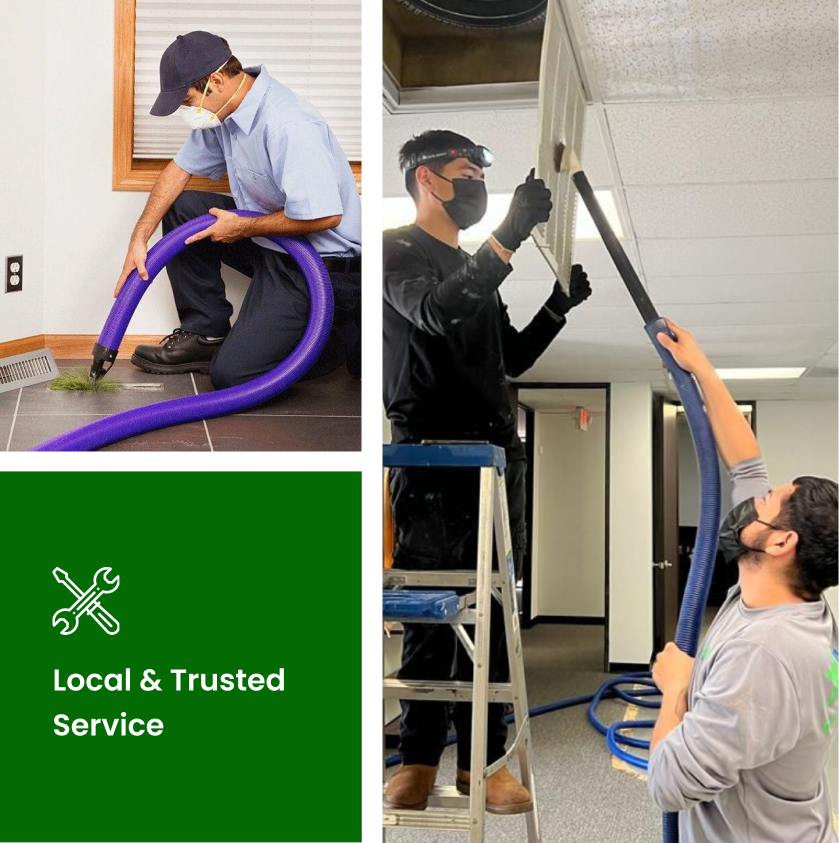The Hidden Power of AC Cleaning: Why Your System Needs Regular Maintenance The Hidden Power of AC Cleaning: Why Your System Needs Regular Maintenance

The Hidden Power of AC Cleaning: Why Your System Needs Regular Maintenance
It is not enough to simply keep your air conditioner clean to keep your home cool; doing so also improves the air quality, efficiency, and cost-effectiveness of your system. Your system will become clogged with dust, allergens, and debris over time, which will in turn reduce its performance and increase the amount of energy it consumes. Regular maintenance helps prevent costly breakdowns, making
an essential part of home care, resulting in a living space that is both healthier and more comfortable. Let’s explore why AC cleaning is a must and how it benefits you in the long run.
How AC Cleaning Improves Indoor Air Quality
Your AC unit does more than cool the air—it also filters out airborne particles. However, when the system isn’t cleaned regularly, contaminants accumulate, affecting your health and comfort.
Why Clean Air Matters
- Better Respiratory Health – A clean AC system prevents allergens and bacteria from circulating, reducing respiratory problems and allergy symptoms.
- Odor Control – Mold, mildew, and dust buildup can create unpleasant smells. AC cleaning eliminates these odors, keeping your home fresh.
- Improved Airflow – Dirty filters and ducts block airflow, making your system work harder. Cleaning ensures steady air circulation and temperature control.
Boosting Energy Efficiency Through AC Cleaning
A clean AC unit runs efficiently, leading to lower energy bills and a longer system lifespan. Here’s how routine maintenance can optimize your unit’s performance:
The Cost-Saving Benefits of Regular Maintenance
- Lower Electricity Bills – When your AC doesn’t have to fight through layers of dust and dirt, it uses less energy, reducing your monthly bills.
- Longer Equipment Lifespan – Dirt buildup forces your system to overwork, causing wear and tear. Regular AC cleaning prevents breakdowns and extends its longevity.
- Fewer Costly Repairs – To maximize energy savings, scheduling at least once a year is highly recommended.
Achieving Optimal Cooling Performance
Your AC system should provide consistent and even cooling throughout your home. Without regular cleaning, efficiency declines, leading to hot spots and increased wear on components.
How Cleaning Enhances Performance
- Faster Cooling – A clean AC unit operates efficiently, reaching desired temperatures more quickly.
- Prevention of Overheating – Dust-clogged units overheat easily. Cleaning prevents this issue, ensuring smooth operation.
- Balanced Temperature Control – With unrestricted airflow, your AC can maintain consistent temperatures in every room.
Additional Perks of AC Cleaning You Might Not Know
Beyond air quality and efficiency, AC cleaning offers several other advantages that often go unnoticed:
- Environmental Benefits – A well-maintained AC consumes less energy, reducing your carbon footprint.
- Enhanced Comfort – A clean unit operates more quietly, providing uninterrupted cooling without loud, straining noises.
- Better Humidity Control – A properly maintained AC removes excess moisture effectively, preventing mold growth.
Essential AC Cleaning Checklist
To keep your AC system in top shape, follow these essential cleaning steps:
DIY Maintenance Tasks
- Change or clean air filters every 1–3 months.
- Wipe down vents and grilles to remove dust buildup.
- Keep the outdoor unit clear of debris, leaves, and dirt.
Professional Cleaning Services
- Deep cleaning of internal components (coils, blower fan, ducts).
- Checking refrigerant levels and inspecting for leaks.
- Full system diagnostics to detect early signs of wear and tear.
Frequently Asked Questions About AC Cleaning
How often should I clean my AC unit?
It’s recommended to clean or replace air filters every 1–3 months and schedule professional maintenance at least once a year.
Can I clean my AC unit myself?
While basic maintenance like changing filters and wiping vents is manageable, professional AC cleaning is necessary for deep cleaning and system optimization.
Will AC cleaning lower my energy bills?
Yes! A clean system runs more efficiently, using less energy and reducing electricity costs.
Does AC cleaning improve cooling performance?
Absolutely. Removing dirt and debris allows your AC to cool more effectively and distribute air evenly throughout your space.
Can dirty AC units cause health problems?
Yes, clogged filters and ducts can spread allergens, mold, and bacteria, leading to respiratory issues and allergies.
AC cleaning isn’t just about keeping your unit running—it’s about protecting your health, saving money, and ensuring year-round comfort. If you’re experiencing uneven cooling in your home, it may be time for
, keeping your AC clean will always pay off in the long run. Prioritize AC cleaning today and enjoy the benefits of a fresher, more efficient home environment.



